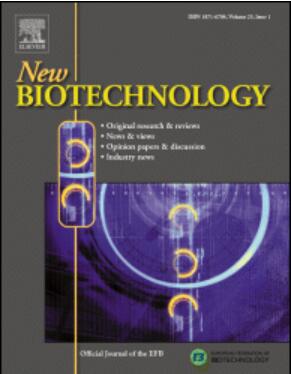How the past is shaping the future of life science: The influence of automation and AI on biology
IF 4.5
2区 生物学
Q1 BIOCHEMICAL RESEARCH METHODS
引用次数: 0
Abstract
Automation has been a transformative force for many industries, including manufacturing and chemistry. While the term traditionally referred to mechanical operations to produce physical objects, the definition has since expanded: 1) it can now mean both physical and/or information automation; and 2) it can now produce physical and/or conceptual outputs. While automation has yet to fully revolutionize life science research, much of which still relies on manual processes, we show that biology automation is the ultimate mixture of the concepts listed above – it involves automation of physical and data processing, and production of physical samples as well as conceptual data outputs. Here, we explore the history of automation and what it can — and cannot — teach us about the future of automated life science experimentation. We examine the current state of automated biology, its major successes, and the remaining barriers to wider adoption. Unlike in other fields, however, automation is reaching broader integration in life science at a time when both biology and AI are reaching their adolescence. At The Align Foundation, we are anticipating this change and hoping to leverage this inflection as a way to accelerate and democratize research. We anticipate that this novel combination of automation, AI, and life science learning will impact the trajectory of biological research, including the design and execution of high-throughput experiments and the analysis of resulting large-scale data.
求助全文
约1分钟内获得全文
求助全文
来源期刊

New biotechnology
生物-生化研究方法
CiteScore
11.40
自引率
1.90%
发文量
77
审稿时长
1 months
期刊介绍:
New Biotechnology is the official journal of the European Federation of Biotechnology (EFB) and is published bimonthly. It covers both the science of biotechnology and its surrounding political, business and financial milieu. The journal publishes peer-reviewed basic research papers, authoritative reviews, feature articles and opinions in all areas of biotechnology. It reflects the full diversity of current biotechnology science, particularly those advances in research and practice that open opportunities for exploitation of knowledge, commercially or otherwise, together with news, discussion and comment on broader issues of general interest and concern. The outlook is fully international.
The scope of the journal includes the research, industrial and commercial aspects of biotechnology, in areas such as: Healthcare and Pharmaceuticals; Food and Agriculture; Biofuels; Genetic Engineering and Molecular Biology; Genomics and Synthetic Biology; Nanotechnology; Environment and Biodiversity; Biocatalysis; Bioremediation; Process engineering.
 求助内容:
求助内容: 应助结果提醒方式:
应助结果提醒方式:


